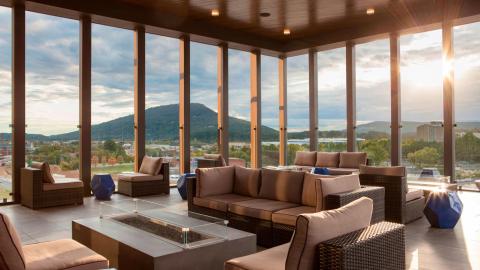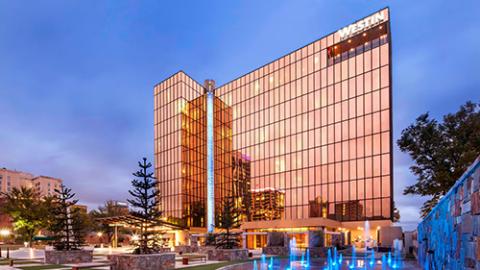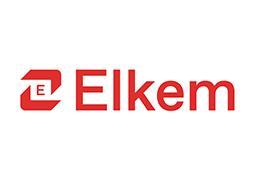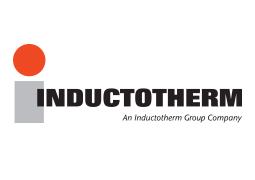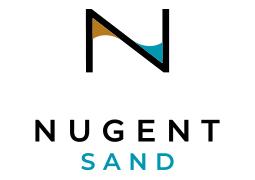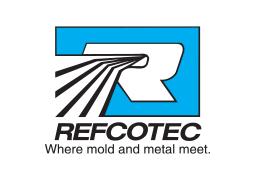Overview
Join us this February in Chattanooga, Tennessee, for the highly anticipated AFS Cast Iron Conference—a must-attend event for casting buyers, ferrous foundries, and industry suppliers. This immersive conference will take you through the entire casting process, from initial design considerations and critical placement details to defining specifications and quality considerations. Designed specifically for casting buyers, casting designers, and those involved in any ferrous foundry. This event offers invaluable insights, practical knowledge, and networking opportunities to elevate your expertise. Don’t miss out on this opportunity to connect and learn with industry leaders in the heart of Chattanooga!
For information about sponsorship opportunities at the event, please contact Kim Farrugia at kfarrugia@afsinc.org or click here.
Location
Hotel Information
801 Pine Street
Chattanooga, TN 37402
(423) 531-4653
Conference Agenda
1401 Mueller Avenue
Chattanooga, TN 37406
- Shuttle bus provided (to and from hotel to facility)
- PPE required
Session Chair: 
Kramer Pursell
Cast Iron Division Vice-Chair
Metal Technologies, Inc.
Auburn, IN

Kramer Pursell
Cast Iron Division Vice-Chair
Metal Technologies, Inc.
Auburn, IN

Andrew Halonen
President
Mayflower Consulting LLC
Calumet, MI
The world is changing constantly. Energy, technology, politics, and in mobility, the appetite for new and old. Electrification had a firm grip on new developments from automotive to agriculture, yet outside forces are challenging those initiatives, and IC engines are back with significant investment. Lightweighting is forever on the pendulum with cost and regulations. Where does cast iron stand? Is it going to retain the popularity of the past? What changes are good for cast iron, which are not so good? How can innovation secure a strong future? The author is active in automotive and trucking and will bring data and optimism to a solid future for cast iron.
Moderator: 
Vasko Popovski
Sales Engineer - East Coast
Ransom & Randolph
Maumee, OH
Contestants: 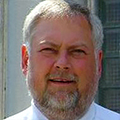
Steven Thelen
Principal Metallurgical Engineer, Casting Subject Matter Expert (SME)
Cummins-Merritor
Troy, MI
Sara Featherling
Senior Buyer
Agco Corp.
Sugar Hill, GA
Expert Panel: 
Ray Burnes
OEM Business Development Manager
MTI
Auburn, IN
Mark Mundell
Sales Manager
Lethbridge Iron Works
Lethbridge, AB 
Bernie Jaeger
Sr. Supplier Quality Engineer
Linamar Corp.
Livonia, MI 
Brandon Reneau
Sr. Metallurgical Engineer
Caterpillar
Mapleton, IL

Evan Letourneau
Application Engineer
MAGMA Foundry Technologies
Schaumburg, IL
This case study presents a novel method for generating gating systems directly from metalcasting process simulation results. Traditionally, skilled engineers design gating systems in CAD software, relying on established calculations and geometric features. While simulation software verifies runner performance and allows for adjustments, the design process can be labor intensive. Here, we propose a Generative Gating method that leverages simulation data to automate gating design. The objective of Generative Gating is to produce effective runner systems that can be produced quickly and by engineers with less experience in gating design. This methodology is applied to a real-world casting scenario, replacing the existing gating system with an automatically generated design. Casting samples produced using both approaches are evaluated and compared for quality. Finally, the advantages and limitations of the proposed gating generation technique are discussed.

Dave Rittmeyer
Director, Business Development
Matthews International
Pittsburgh, PA
3D Printed Sand is one of many options foundries use to produce castings. 3DPS has multiple advantages, however, it also has limitations. Being aware of these advantages and limitations will provide you with the necessary tools to make decisions for successful projects. We will review and discuss key design practices. Properly designing cores and molds is the key to successful castings no matter what binder system is used. As we make our journey into discussing these practices, we will see how these considerations played into a family of iron castings. By using 3DPS this iron casting was successful from prototype and is now moving into production.

Jason Bradley
Director Of Engineering
Mueller Co.
Chattanooga, TN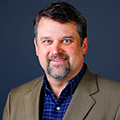
Matthew Sutterfield
Sr. Product Engineering Manager
Mueller Co.
Chattanooga, TN
The evolution of additive manufacturing has opened new frontiers in component design and production, particularly in the casting industry. This presentation explores the development and implementation of a patented monolithic bypass valve, inspired by GE’s breakthrough in 3D-printed fuel nozzles as well as Humtown’s combined core assembly example. Traditional bypass assemblies, composed of numerous welded and threaded components, present significant challenges in terms of leak paths, assembly time, and cost. By leveraging 3D sand printing and collaborative innovation, the team engineered a single-piece monolithic solution that dramatically reduces complexity—from 7 components to 1, and from 240 minutes of assembly to just 10. The result is a faster, more cost-effective, and reliable product with fewer leak paths and lower labor costs. The session will detail the design journey, partner collaboration, and performance outcomes, while also outlining future applications across valve sizes and new product development. This case study exemplifies how additive casting can transform legacy designs into next-generation solutions.

Ramon Suarez
Director of Engineering and Research
Azterlan
Durango Bizkaia, Spain
Cast iron is a unique alloy that, depending on its nucleation capacity, can solidify according to the stable Fe-C-Si diagram with graphite formation, as well as in an intermediate state with graphite and cementite, or with the complete presence of carbides and austenite. These three solidification behaviours determine the final properties of the castings. Nowadays, classic casting systems, in which heat evolution occurs in the direction of the feeders, no longer have a place. For competitive reasons, it is essential to design high-yield pattern plates, reduce the number of feeders, lower energy consumption, and avoid processes that do not add value, such as deburring, trimming, and degating, to produce castings in a lean manner without WIP. The only way to obtain sound castings with high yield is to combine heat evolution during solidification with the ability to form graphite. The isolated thermal pockets found in the last-to-freeze areas (LFA) and the corresponding contraction due to residual liquid must be compensated by graphite formation in these areas. Controlling nucleation and graphite growth during the eutectic phase is essential to obtain flawless components and avoid further sorting of castings parts with porosity due to micro-shrinkage.
Drinks & Appetizers to be served.
Session Chair:
TBA
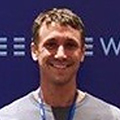
Eli Davis
Lead Engineer
Deep View AI
Rochester, MI
Casting defects—including cold shuts/cold pours, short shots/misruns, shrinkage porosity, gas porosity, sand inclusions, and flash—remain leading causes of scrap and rework in cast iron production. We present a production-ready vision system that combines rules-based inspection with deep learning segmentation/classification to provide reliable, high-throughput detection on complex geometries.
Thermal Analysis as a Process Control Tool for Qualitative Analysis of Magnesium Treated Ductile Iron

Anna Richter
Metallurgist
Buck Company, LLC
Quarryville, PA
The commercially available Mg Cup system is a quick process control tool to ensure that each ductile transfer ladle contains magnesium in excess of 0.035%. A molten sample is obtained from each transfer ladle and the resulting cooling curve provides a PASS/FAIL result indicated by a visible green or red light to the operators. Results are visible in less than 60 seconds allowing for quick quality decision making.
Single Step AI Ductile Cast Iron Microstructure Analysis

Francis Lauzon
Director of Product and Innovation
Clemex Technologies, Inc.
Longueuil, Quebec
We introduce a fully automated, single pass solution for the identification and quantification of graphite nodules, ferrite, and pearlite in an etched metallographic sample. As such, the need for separate analyses of unetched (for graphite) and etched (for matrix) samples is eliminated which more than doubles the speed, efficiency, and objectivity of such metallographic analysis.
AI-Powered Optimization in Green Sand Castings: A Practical Approach

Derek Yesmunt
Digital Transformation Sales Engineer
Norican Group
LaGrange, GA
Green Sand casting is a complex process, with many interlinked variables that affect quality and cost. That makes it difficult to improve results through conventional analytics. Artificial Intelligence (AI) optimization is the best way to handle this complexity. It can deliver results today. This presentation will explain the elements of a typical AI system, then considers how to best to plan and run an AI project for a green sand foundry operation. It will give practical examples and share results of successful implementations. Topics will include tips on project planning actions, typical project timelines, the tasks required in each phase and how to overcome common challenges.
Resonant Frequency (RF)

Rebecca Ward
Partner
Impact NDT
Loveland, OH
Enhancing Quality Control in Ductile Iron Casting Through Ultrasonic Testing

Paulina Vega
Metallurgist
Waupaca
Marinette, WI
In the production of ductile iron castings, maintaining tight quality standards and meeting customer specifications is essential to ensuring product reliability and performance. This presentation examines the application of ultrasonic testing (UT) as a non-destructive evaluation technique that employs high-frequency sound waves to assess nodularity percentage, detect internal discontinuities, and evaluate the structural integrity of ductile iron components. The use of UT in foundry operations provides a reliable means of verifying the internal soundness of finished castings, thereby enhancing process control, reducing defect rates, and ensuring compliance with customer and industry requirements.
Session Chair: 
Eric Nelson
Eric Nelson Consulting LLC
Mankato, MN

Dr. Sam Ramrattan
Professor
Western Michigan University
Kalamazoo, MI
Chemically bonded sand processing remains a significant part of the metal casting industry because it permits precision sand castings. There is a lack of information available on chemically bonded ceramic sands. This study relates the physical, mechanical, and thermo-mechanical properties of disc-shaped specimens made from either silica or ceramic sands. Furthermore, this paper compares results from a cast iron casting trial for three different chemically bonded sand processes. The purpose of this cast iron qualification serves as a performance predictor for various chemically bonded sand systems when iron chemistry, super-heat, and head pressure is held constant.
American Foundry Society (AFS) standard disc-shaped specimens were fabricated with silica and ceramic sands. The fabrication processes used were: Phenolic urethane cold box (PUCB), Resin coated shell hot box (RCSHB), and additive manufacturing by three-dimensional printing (3DP). Specimens were laboratory tested and evaluate in iron casting trials. Testing included density, abrasion, thermal distortion, permeability, impact and retained strength. All tests were accomplished according to AFS Standards. With a ceramic sand it was possible to produce cores and molds having superior strength, and thermal stability when compared to a round grain silica sand. The chemically bonded ceramic sand specimens showed fewer casting surface issues when compared to the silica sand specimens in iron casting trials.

Josh Gammariello
Sales Application Engineer
HA International
Westmont, IL
Casting defects arise from a variety of causes, impacting both casting quality and foundry financial performance. This presentation highlights several of the most common defects, including gas-related issues, solidification shrinkage porosity, foreign inclusions, and cold metal defects. Through an analysis of selected simulation results, we explore the underlying root causes of these defects and demonstrate how predictive modeling can guide process modifications to prevent their occurrence in the future.
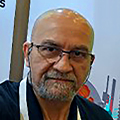
Erol Ergin
President
NovaCast Solutions USA Inc.
Oswego, IL
Thermal analysis is a foundational technique in metalcasting, used for real-time monitoring of melt quality and prediction of solidification characteristics in cast iron alloys. This presentation explores the integration of quantitative thermal data obtained from our thermal analysis system, ATAS-MetStar, into our modern casting solidification simulation software, NovaFlow & Solid, to enhance shrinkage predictive accuracy.

Ron Spencer
Quality Manager
Rochester Metal Products
Rochester, IN
Case Studies discussing how casting geometry set up a pre-condition of forming excessive shrinkage and what was needed to change with the casting to reduce or eliminate the porosity. These case studies also include a discussion on the importance of the QMS contract review and PPAP documentation systems.
Determination of Fracture Temperature Through Surface Color

David Kesse
Elkem Technical Services Manager - North America
Elkem
Dunlap, IL
Batter damage and cracked castings remain prevalent challenges for today’s foundry professionals. To help reduce these defects, it was discovered that the color of the fracture surface can serve as an indicator of the temperature at which the damage occurred. This insight offers a valuable diagnostic tool for tracing the origin of this damage.
In this report, we present a detailed testing methodology along with a visual reference guide that any foundry can use to identify where in the process casting damage takes place.
Equipment Design for Varying Grades of Iron
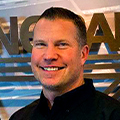
Rick Kempf
North American Foundry Director - Sales
General Kinematics Corp.
Crystal Lake, IL
Castings can be damaged during the shakeout process if not handled properly. The presenter will discuss areas to consider and options to effectively remove sand while appropriately handling castings.
Blast Equipment
TBA
Blast Cleaning Technologies
West Allis, WI
There is potential for damage as castings move through the shot blast process. Overblast, breakage, and castings impacting other castings can all create issues if not designed properly. In this session, the presenter will cover considerations and options for effectively shot blasting castings without damage.
Session Chair: 
Brandon Reneau
Sr. Metallurgical Engineer
Caterpillar Inc.
Mapleton, IL
Chemical Reclamation – Sand Reclamation using Advanced Oxidation and Ultrasonics

Eric Nelson
Eric Nelson Consulting LLC
Mankato, MN
Foundries have been long time recyclers when it comes to metal. This presenter will discuss taking additional steps in recycling by briefly covering a process for reclaiming molding media and clay binders. The talk will then shift to the effects of using that reclaimed material on the microstructure and overall quality of the castings produced.
Thermal Reclamation of Sand in a 3D Sand Printing Facility

Jake Espinosa
Kimura Foundry
Shelbyville, IN
The use of 3D printing has had major impacts on many various industries, including metal casting. Kimura Foundry America employs the use of three ExOne S-Max printers to produce sand molds that are then used in production, broken down by a shakeout machine, and finally recycled using a thermal sand reclamation system. Kimura Foundry is able to recycle more than 95% of their patented ceramic sand. The commercially available thermal reclamation machine works by burning out the binder and activator chemicals that are used in the printing process. Kimura Foundry America runs their thermal 24 hours a day, cleaning about five hundred pounds of sand per hour, about six tons per day. The reservoir holds up to 18 tons of clean sand at a time, which is beneficial when there are holidays and the plant is closed. With the printers running daily, the weight capacity is rarely a problem. The thermal monitors internal temperature, shutting down once it reaches 650°C. It then cycles out the cooked sand and brings in new dirty sand, turning back on once the internal temperature drops to 520°C. This system also comes with environmental regulations if operated in America, such as an opacity meter to monitor particle emissions.
Mechanical Reclamation

Trevor Beach
Technical Director Betz Industries
Grand Rapids, MI
In 1984, Betz Industries began a journey into mechanically reclaiming sand. In 1999, they purchased a system to mechanically break down the chemically bonded chunks of sand from the casting process. The presentation will walk you through the system from shakeout to sand ready to be used again by the sand mixers. A small discussion of the impact difference of reclaimed sand vs. raw new sand.
Registration
AFS Member:
$720.00 Early Registration (Ends 1/19/2026)
$900.00 Standard Registration
Non-AFS Member:
$1,125.00 Early Registration (Ends 1/19/2026)
$1,350.00 Standard Registration
AFS presents a variety of technical and management conferences (in both in-person and virtual formats). The refund policy for AFS conferences is as follows: 1) Substitutions are accepted at no charge at any time up until the start of the conference; 2) Full refunds are offered if AFS is notified in writing of cancellation at least 30 days in advance of the conference. No refunds or credits are available for less than 30 days written notice.
